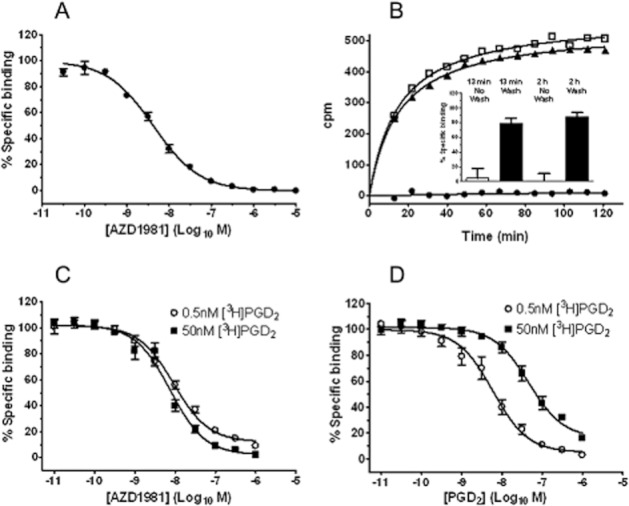Figure 2.

AZD1981 is a potent antagonist at DP2. (A) Displacement of specific binding of [3H]PGD2 (2.5 nM) to HEK cell membranes expressing recombinant human DP2 by AZD1981. Values are mean ± SEM (n = 25). (B) Reversibility of inhibition by AZD1981 of specific binding of [3H]PGD2 to HEK cells transfected with human DP2. The inset shows the percentage recovery of [3H]PGD2 binding 13 min and 2 h after removal of AZD1981 compared with control samples where membranes were washed in buffer containing AZD1981. Values are displayed as mean ± SEM for duplicate values from four separate experiments. The main panel shows results from one of the replicates contributing to the data in the inset and depicts [3H]PGD2 association to washed beads in comparison with control DP2 membrane-coated beads, which had not been treated AZD1981. The closed circles show [3H]PGD2 association to beads washed with AZD1981 and define non-specific binding. (C) Displacement of specific binding of [3H]PGD2 (0.5 and 50 nM) to HEK cell membranes expressing recombinant human DP2 by AZD1981. (D) Displacement of specific binding of [3H]PGD2 (0.5 and 50 nM) to HEK cell membranes expressing recombinant human DP2 by unlabelled PGD2. For (C) and (D), values are displayed as mean ± SEM for duplicate values from six separate experiments.
